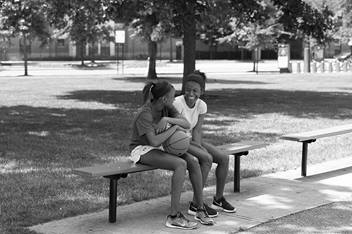Conversation With a Children’s Hospital CFO: How Value-Based Care Helps Make Community Investment Possible

Luke Brown, the chief financial officer of Nationwide Children’s Hospital, is charged with carefully managing the finances of one of the United States’ largest pediatric health systems. At the same time, Nationwide Children’s is making significant population health investments, with the goal of keeping children as healthy as possible – and keeping them out of the hospital.
In a recent conversation, he spoke of balancing those goals.
Question: How does it feel having financial responsibility for an organization that is making investments that keep children out of the hospital?
Luke Brown: I have heard my colleagues say that our ultimate goal is to put ourselves out of business, and that’s not wrong. We really do want children to be healthy enough that they don’t need us. That means we have to invest in their overall wellbeing, and we’re doing that through quality housing, through improving their educational and future job opportunities, by providing health services in schools, and by helping their community providers deliver the best possible care.
Q: For now, though, let’s say you want to stay in business as a hospital so you can continue to help children wherever they are. How does Nationwide Children’s strike a balance?
LB: We do it in a number of ways, though one of the most important is through our value-based care model. Our accountable care organization, Partners For Kids is responsible for the health of more than 400,000 children covered by Medicaid Managed Care in south central, west central and southeastern Ohio. It’s the most experienced and largest pediatric ACO in the country.
Historically, health care reimbursement was based on volume of services provided. Partners For Kids works differently. In its model, the healthier you keep children, the more money you save. So Nationwide Children’s, along with our partner Dayton Children’s Hospital and community providers, is incentivized to keep children well. If we can help children control their asthma, or we can help them all receive the immunizations they need and ultimately help them avoid the Emergency Department or Urgent Care, everyone saves resources in the long run.
Q: What happens to the resources you save?
LB: In many cases, they are reinvested back into health services and community programs. So Partners For Kids helps us have a beneficial cycle. Nationwide Children’s invests money in population health initiatives and wellness programs. Those can help keep children well. When those children stay well, we save money through Partners For Kids. Then that money is reinvested.
Q: How else can you strike the balance between what you want to invest in population health programs and being fiscally responsible?
LB: We rely heavily on the “power of the partnership.” Children’s hospitals are natural conveners, and we know that the more people and organizations we can bring to the table, the more we can do. We have amazing philanthropic partners like Nationwide and the Nationwide Foundation, which has just announced a large new gift to our neighborhood revitalization initiative, Healthy Neighborhoods Healthy Families.
We have great relationships with Columbus, Franklin County and other local governments, who help with funding and who help us access properties for rehabilitation through their land banks. Columbus City Schools and others allow us to provide health services to their students.
We also have crucial relationships with community partners, such as the faith-based Community Development For All People on Columbus’ South Side. We try very hard to tailor our efforts to the exact needs of the neighborhoods, and organizations like CD4AP both push us and give us the ability to do that.
Q: What would you say to other organizations that want to invest in the community but are hesitant or don’t know how to get started?
LB: I would say that first, these investments are part of the mission to make children healthier that every children’s hospital has. We try to make sure they are tied to specific health outcomes; our school-based asthma therapy program should be able to demonstrate that it is making an actual difference for children (and it has). An initiative we have helped develop over the last two years, Pediatric Vital Signs, is helping show exactly how certain population health initiatives are or are not improving outcomes.
These population health investments have also helped us. We have hired more than 1,300 people from the South Side of Columbus in the last five years – from the same neighborhoods where we are operating workforce development programs through Healthy Neighborhoods Healthy Families. Our investment has given us an employment pipeline that we wouldn’t have had otherwise.
If you make these investments thoughtfully, they will benefit everyone – children, the community, and the hospital itself.



